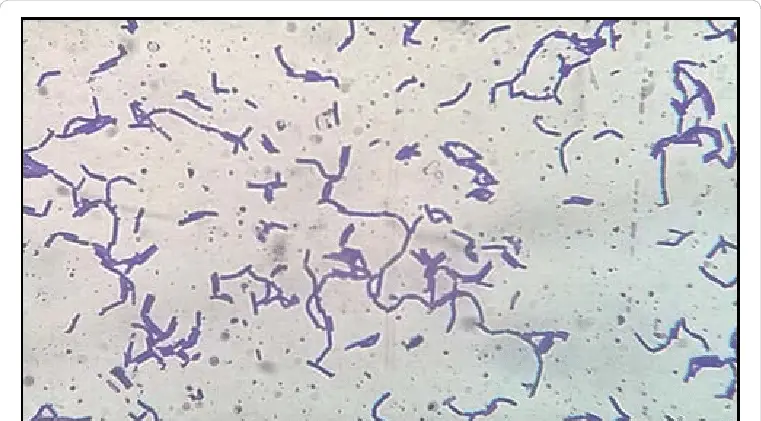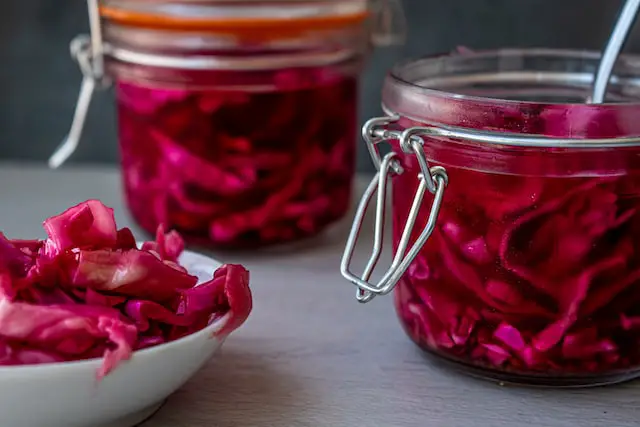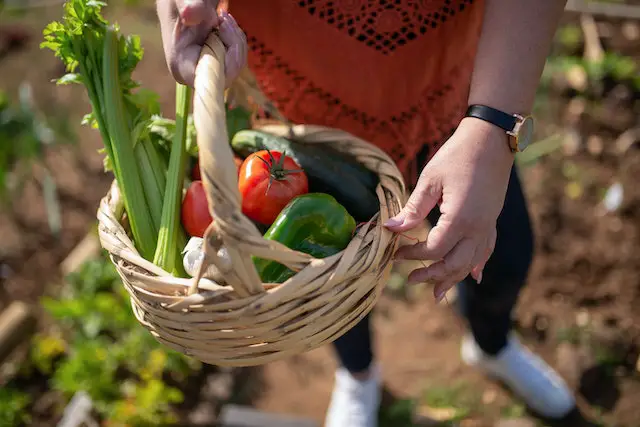Before refrigerators and freezers existed, fermentation was the frontier of food preservation. It gave birth to the most nutritious fermented vegetables in the world such as kimchi and sauerkraut. Though big box retailers have commercialized fermented vegetables, nothing beats the benefits of fermenting your vegetables at home.
From food safety and fermentation mastery to managing high blood pressure and diabetes, discover the life-changing benefits of fermenting vegetables at home. Doing so can elevate your diet, transform your health, and improve the quality of your life through a very simple and practical process. The benefits may sound superficial but fermentation is that kind of awesome.
8 Reasons fermented vegetables deserve a spot in your diet
In case you didn’t notice, most dishes with fermented vegetables are flavorful and light for your tummy. Other than their sweet and tangy taste, there’s more to fermentation that can give you nutrients and health better than any synthetic medications and processed foods.
#1 Fermented vegetables are safer than raw vegetables

In a nutshell, fermentation is a biological process of transforming food and drinks using good microorganisms or microbes. Everyone has two cents when it comes to the term microbes and most people get the ick and associate them with spoilage. However, it is furthest from the truth.
Not all pungent and tangy are spoiled. In fermentation, the good microbes turn the sugars and starch from vegetables into lactic acid and alcohol. The tangy taste comes from the acid which coats the vegetables and fights off bad bacteria and pathogens.
During the fermentation process, pathogens and bad bacteria don’t stand a chance of surviving in a highly acidic environment. Lactic acid produced in the conversion of sugar in vegetables is the strongest killer of a lot of strains of bad bacteria. It is also the main reason why it’s safer than raw vegetables.
Fermented vegetables vs. raw and canned vegetables
In an interview with The Fermentation Association, USDA microbiologist Dr. Fred Breidt shared some fascinating science about the safety of fermented foods:
- Raw vegetables are not covered by any protective substance which makes them more vulnerable to contamination like E.coli, salmonella, and Listeria.
- There are no documented food-borne illnesses associated with properly sanitized and fermented vegetables. Cases of E-coli outbreaks on fermented vegetables are usually due to the contamination of the raw vegetable before fermentation.
In an Enterotoxigenic Escherichia coli (ETEC) outbreak in Korea in 2012, several students got sick after consuming contaminated kimchi. Dr. Briedt explains that the takeaway from the incident is if the vegetables are contaminated with hazardous bacteria, they will become more dangerous after fermentation.
- There are fewer risks involved in fermentation than in canning vegetables, which are prone to the development of life-threatening botulism due to their low-acid environment.
The basis of food safety of fermented vegetables not only depends on taste, appearance, and smell. Sometimes it is the process and the level of safety of the raw materials used. Just because fermented vegetables smell a bit pungent doesn’t mean they’re unsafe. Sometimes, it’s a sign that it’s flavorful, full of good microbes, and ready to eat!
#2 Fermented vegetables contain the star of probiotics: Lactobacillus Plantarum

Probiotics are probably one of the factors that reeled you in the world of fermentation. In a nutshell, they are a group of good bacteria and yeast that fight the disease-causing bacteria in our gut. Under the microscope, these probiotics contain millions of different strains of good bacteria and one of them is lactobacillus Plantarum.
Many probiotic fans love lactobacillus Plantarum for its numerous and promising benefits. It is the main genome found in lactic acid and the number one killer of pathogens in fermented products and in the gut. It is mainly found in milk, meat, and fermented vegetables like:
- Sauerkraut.
- Pickles.
- Brined olives.
- Korean kimchi.
- Nigerian Ogi.
- Sourdough.
- Some types of cheese.
- Fermented sausages.
- Some types of stockfish.
Getting to know Lactobacillus Plantarum
Lactobacillus Plantarum is one of a kind type of probiotic sought after by health enthusiasts due to its strong resistance to stomach acid and pathogens. It can survive in the acidic environment of our gut and travel from both ends of our digestive system (mouth to the colon).
As the star probiotic in lactic acid, L. PLantarum is efficient in fighting pathogens and disease-causing bacteria in our gut which consequently helps:
- Improve our immune system.
- Reinforces the good bacteria in fighting the pathogens.
- Improve the defense and resistance of good bacteria for future injection attempts of pathogens.
More research is done with lactobacillus Plantarum and some studies found some interesting stuff about this good guy:
- A potential for lowering cholesterol and treating high blood pressure.
- Good for managing food poisoning and candida.
- Reduce allergenicity in soy milk and other soy products.
- FODMAP reduction and easing symptoms of gut-related problems like irritable bowel syndromes, Crohn’s disease, and colitis.
- Helps remove toxic compounds in pesticides in fruits and vegetables.
L. Plantarum is tough and hardy but it has a weakness that we, humans, can adjust to. It is a transient bacteria and does not stay long in our system. Therefore, to continually experience its benefit, we need to consume fermented vegetables regularly to keep them flourishing in our gut.
#3 Fermented vegetables have an increased nutrient potency and your body’s nutrient absorption

Fermentation transforms and breaks down the biological components of vegetables to release more vitamins and nutrients. Here are some studies that prove how fermentation elevates and retains the goodness of vegetables and makes them more nutritious:
- In a study about fermented vegetables at the University of Lublin in Poland, they found out that fermented carrots get an increased vitamin A and beta-carotene content after fermentation.
- Before and after fermentation studies on sauerkrauts found that Vitamin C retention ranges from 61.9% and 100.0%. Meanwhile, a separate study from the University of Wisconsin established the fact that the in some fermentation methods sauerkraut can contain half as much Vitamin C as cabbage.
- Research studies found that fermentation activates the Vitamin B12 enrichment of plant-based foods like tempeh. Natto, which is a form of fermented Japanese soybeans, contains menaquinones or Vitamin K that plays a crucial effect in osteoporosis, cancer, and cardiovascular diseases.
Best fermented vegetables to try at home
If you want to reap all the vitamins and minerals in fermented vegetables, you can start with the simple but most nutritious ones below:
- Sauerkraut: Vitamin C, Vitamin K1, iron, folate, manganese, copper, and potassium.
- Kimchi: Rich in beta-carotene, Vitamin A, Vitamin C, Vitamin K, folate, choline, potassium, and calcium.
- Pickled carrots: Calcium, potassium, magnesium, Vitamin C, and Vitamin K
- Fermented garlic scapes: Allicin, Vitamin C, and selenium, B Vitamins like riboflavin, α-tocopherol, thiamin, and ascorbic acid.
- Kimchi cucumbers: Vitamin A, Vitamin B, Vitamin C, Vitamin K, calcium, iron, phosphorous, and selenium.
#4 Fermented vegetables are easier to digest and help prevent bloating

In general, our body digests food for 24 to 72 hours. Carbohydrates like rice and bread take 20 to 30 minutes to break down while meat and fish take two to three days to digest. Raw vegetables and fibrous foods take less than a day to digest but fermented ones are the quickest to break down.
The good bacteria and yeast in fermented foods pre-digest the vegetables right before you consume them. They break down the starch or sugar which leaves you with more digestible and tastier vegetables to devour. Due to sugar conversion, they also contain fewer calories which makes fermented vegetables a diabetic-friendly option and an ideal food for those who are losing weight.
#5 You’ll get the purest form of fermentation teeming with good bacteria

Due to the renewed popularity of fermentation, more and more fermented vegetables are available on grocery shelves today. Their exposure to the public is a good strategy to pique the interest of the uninitiated ones. However, the way commercial fermented vegetables are processed kills a lot of probiotics which lowers their potential as a superfood.
Manufacturers usually add sugar, vinegar, and pasteurize canned vegetables to prolong their shelf-life. Pasteurization is the process wherein the jars of fermented food are treated with heat to kill all bacteria, including some of the good ones.
While the intent of the process is good, especially for food preservation, the pasteurization does not spare the good bacteria which is the core essence of fermentation, aside from its flavor. Therefore, fermenting at home would be more than ideal since you get the full goodness that fermentation brings out of your vegetables.
#6 You improve your fermentation skills and discover new flavors.

Some people start loving fermented foods because of their health benefits. However, some are drawn into the rabbit hole of fermentation because of their unique flavor. The most interesting part of fermentation is you can modify the flavor profile as much as you like by using spices and fruits and adjusting the fermentation process.
With fermentation, you get to enjoy full control over how the end product will taste based on your preferences. In addition, you will also learn how microorganisms work, how to fight against contaminants, and be exposed to different kinds of fermentation, such as:
- Lacto-fermentation or lactate fermentation: A type of fermentation that involves lactobacillus bacteria that produce lactic acid, giving that tangy flavor to foods. It is the process used for pickles, yogurt, kefir, sourdough, and sauerkraut.
- Alcoholic fermentation (acetic acid): A type of fermentation that turns sugar into acid and alcohol or also known as acetic acid fermentation. It is the process used to make vinegar and alcoholic drinks like wine and borderline alcoholic like kombucha.
- Propionic acid fermentation: A type of fermentation that utilizes a different kind of bacteria like Propionic acid bacteria (PAB) to create an anaerobic environment. In simple terms, it is used for making different types of cheese.
#7 Fermenting vegetables helps you save on grocery costs

Aside from nutrition and flavor, fermentation also helps you to be more economical. If you have overflowing harvests or bought vegetables in bulk from farmers or flea markets, you may ferment the excess perishables so you can enjoy them throughout the whole year.
You may also share your fermented vegetables with your friends so they can enjoy them longer than the raw ones. Homemade fermented vegetables usually last for 4 to 18 months. With proper storage, you can enjoy your previous year’s harvest and never run out of a healthy food supply.
#8 Fermenting at home can help educate your kids and make it a fun science project

Fermentation is more than just food preparation. It entails the concept of how microbes turn raw materials into another type of food. By doing it at home, you are giving your children a core memory of food preservation techniques that they can mimic as they grow old. Seeing and tasting fermented vegetables will also remind them of you wherever they go.
As a parent, you’ll also be able to demonstrate how something so sweet or salty can turn into a flavorful dish. Your kids will also adopt the value of eating healthy, which will keep them away from metabolic diseases that come with an unhealthy diet and age.
What are the healthiest vegetables to ferment?
The healthiest vegetables to ferment are those that are already nutritious as raw vegetables. During fermentation, their nutritional components will either be retained or doubled. You can either pickle them or turn them into kimchi. These vegetables include:
- Cabbage.
- Garlic.
- Cucumber.
- Pepper.
- Carrots.
- Beans.
- Radish.
As you learn how to make fermented vegetables, you’ll surely start to experiment and try other vegetables. Most people even try other forms of fermentation like making kombucha, kefir, and fermented bread like sourdough.
Frequently Asked Questions (FAQs)
What vegetables should not be fermented?
Not all vegetables are eligible for fermentation. Some of them have insufficient yeast on their skin that can jumpstart the fermentation process. Without the wild yeast and bacteria, the following vegetables will not be developing enough lactic acid to kill mold bacteria.
- Potatoes
- Turnips
- Beets
- Squash
- Rhubarb
- Asparagus
- Artichoke
- Broccoli
- Brussels sprouts
- Cauliflower
- Eggplant
- Green beans
- Kale
Which fermented food is the healthiest?
All fermented foods and drinks are healthy for the body. However, some are distinctly healthier than others because they have more strains of probiotics and the vegetable used is nutrient-dense even before fermentation. These are the healthiest fermented foods and drinks that you can try:
- Sauerkraut.
- Kimchi.
- Kefir.
- Yogurt.
What is the process of fermenting vegetables?
Several fermentation techniques are used in different cultures across the globe. The basic or the most common one is adding salt to freshly cut vegetables. The salt will draw the water from the vegetables and creates a perfect home for the wild yeasts to begin the fermentation process.
The wild yeast and bacteria will consume the starch in the vegetables and turn it into lactic acid. Lactic acid will give the vegetables a sour taste and consequently keep the fermented vegetable acidic enough to naturally kill pathogens.
Do fermented vegetables need to be refrigerated?
Yes, fermented vegetables need to be refrigerated to slow down the fermentation process and prolong their shelf-life.
How long can you store fermented vegetables?
Unopened and properly fermented vegetables can last for 6 months to a year. However, the longer you ferment the vegetables, the more they become acidic and tangy. Opened jars of fermented vegetables may not last long because it has been exposed to contaminants and may develop mold after a month or two.
Can you freeze fermented vegetables?
Fermented vegetables are usually placed in the fridge or freezer to stop the fermentation process. In freezing temperatures, they will retain the flavor and stay protected from contaminants. Make sure to keep them in freezer-safe containers to avoid freezer burns on the vegetables.
Is apple cider vinegar a fermented food?
Apple cider vinegar is a product of a full fermentation cycle. It is made from crushed apples mixed with yeast to convert sugars into alcohol and eventually acetic acid. It follows the same process as kombucha. However, kombucha is removed from the fermentation process before too much alcohol and acetic acid are produced.
Does ferment mean rot?
Ferment doesn’t mean rot because the bacteria that cause decomposition or rotting are not the same bacteria that ferment vegetables. They may look the same but rotting vegetables contain harmful pathogens and bacteria that can make you sick. Whereas, the yeast and bacteria in fermented foods are the good guys that biologically transform substances into more nutritious food.
Is fermented food safe?
Yes, fermented food is safe for human and animal consumption because it is protected by lactic acid. Lactic acid contains several strains of yeast and good bacteria that reinforce your gut microbiome and prevent the overgrowth of pathogens.
